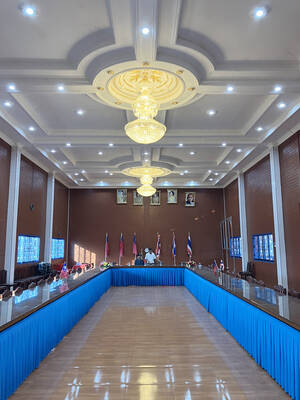What a book to begin 2014 with! Outsider II: Always Almost, Never Quite is the second and final volume of UK art critic Brian Sewell’s sexually outrageous, personally vituperative and artistically perceptive autobiography — and it’s just as engrossing, possibly even more so, than the superb first volume (reviewed Feb. 12, 2013).
Sewell has been loudly vilified and quietly admired for his belief that art is, as it has always been, exceptional craftsmanship fired by poetic vision. He never says this in so many words here, but this is what he means, and why he has no time for much contemporary art and almost all installations. Moreover, he aspires to write prose with the elegance he so admires, and the resulting combination of trenchant opinion and caustic wit makes this book irresistibly attractive. Sewell’s sexual outspokenness, therefore, is not at the heart of the book, as some have assumed, but simply the icing on an already sumptuous cake.
Sewell was a pupil and later a close associate of former Courtauld Institute director Anthony Blunt, and when Blunt’s spying activities were revealed in 1979 Sewell stood by him. He describes here how he smuggled him, disguised, out of his flat and past a crowd of waiting journalists. He quotes an assessment of Blunt’s Guide to Baroque Rome (1982) as “the greatest architectural guidebook ever written,” and goes on to pay tribute to his “warmth, wit, enthusiasm and evident humanity.” That such a man should have remained in any way involved with a political ideology he had long ceased to believe in was a case of unbelievable short-sightedness, Sewell feels.

This book must have been a legal minefield for its publishers. Both institutions and individuals are subjected to caustic assaults that would take your breath away if you weren’t already in fits of laughter. London’s Metropolitan Police’s Fine Art Squad, for instance, is “wholly unqualified in any technical sense, [and] connoisseurship a word they could not even spell.” Someone is “a sweaty little tyke of sixty or so,” and the BBC is, in the arts, “patronizing, complacent, mealy-mouthed [and] cliche-ridden.” A named TV presenter is described as having “the physical charms of a North Korean despot and a command of French that compels him to pronounce Seurat as Sewer Rat.”
He observes that the Paris police in May 1968 exhibited a “blind brutality obviously enjoyed by those inflicting it,” and that press officers “are not employed to tell the truth.” Someone, also named, is described as “a florid thick-skinned man who tanned his face with almond oil until it looked like pork crackling” and who was “an ignorant cheat of whom few housewives could be rid without parting from their silver teapots for a sixpence [NT$1].”
Regarding the Courtauld Institute, Sewell simply notes how, after the scandal, their employees left out Blunt’s manuscript notes on artistic matters for the garbage collector (though some pages were retrieved by students), and that in the post-Blunt years, instead of a thorough grounding in historical styles and the legends so often illustrated by classic painters, students were offered tendentious courses such as “The Representation of Race in British Art 1730-1860.”
Sewell has some special interests, to each of which a chapter is devoted. One is the surrealist painter Salvador Dali. Sewell visited him in Spain four times and offers much erotic and scatological detail about him — some observed, some the result of speculation. On his first visit, Dali required him to lie in the armpit of a Christ-figure he was in the process of constructing in his garden, and to masturbate. With his waxed mustache, green velvet suits and appalling halitosis, Dali becomes a ridiculous figure, yet Sewell nonetheless concludes that he is probably the last in the line of genuine Old Masters.
Another special interest is Turkey, which Sewell began to visit after Europe seemed to him to have no new splendors to offer. His sardonic descriptions of the country before it became a popular tourist destination are fascinating. His love of dogs (he’s owned 17) and of vintage cars is also again on display.
As for sex, Sewell describes his own gay exploits, not with shame, but with manifest enthusiasm. He knows well he is not one to resist temptation, nor to reside for long exclusively in any serious affair, stating that for attraction to grow stale is “the bedeviling characteristic of homosexual relationships.”
For the rest, the account of the fate of the paintings on theatrical subjects Somerset Maugham bequeathed to London’s National Theater makes for scandalous reading. But there are many scandals in this book, ranging from someone making forgeries of the work of the acknowledged forger Tom Keating to forged signatures that were “culled from a dictionary of signatures that [a named person] cunningly pressed on any customers who asked for confirmation that the signature was genuine.”
There are many pleasures in this book — art-world gossip, exposures of incompetence, observations on the sexual life and wry jokes. Sewell once wrote a will leaving his eyes to an art critic who had cried out at a press viewing that she couldn’t bear to be in the same room as him, because, he writes, though she had a pair of eyes of her own, she nonetheless couldn’t see.
The English seem to specialize in two-volume autobiographies. Sewell’s is even more enjoyable than Harold Acton’s Memoirs of an Aesthete and More Memoirs of an Aesthete, and almost as good as Malcolm Muggeridge’s unforgettable Chronicles of Wasted Time. This is high praise indeed.
I noticed one small and uncharacteristic error. “Men must endure their going hence” is not spoken by “mad Lear,” but by Edgar in the same Shakespeare play. That this wasn’t picked up by anyone during the editorial process is a sure sign of the declining standards in the media that Sewell so persistently complains of. The entire passage, incidentally the closing one of the book, was originally published as an article in the London Evening Standard a decade ago — plenty of time, you would have thought, for someone to spot the mistake.

May 26 to June 1 When the Qing Dynasty first took control over many parts of Taiwan in 1684, it roughly continued the Kingdom of Tungning’s administrative borders (see below), setting up one prefecture and three counties. The actual area of control covered today’s Chiayi, Tainan and Kaohsiung. The administrative center was in Taiwan Prefecture, in today’s Tainan. But as Han settlement expanded and due to rebellions and other international incidents, the administrative units became more complex. By the time Taiwan became a province of the Qing in 1887, there were three prefectures, eleven counties, three subprefectures and one directly-administered prefecture, with

Taiwan Power Co (Taipower, 台電) and the New Taipei City Government in May last year agreed to allow the activation of a spent fuel storage facility for the Jinshan Nuclear Power Plant in Shihmen District (石門). The deal ended eleven years of legal wrangling. According to the Taipower announcement, the city government engaged in repeated delays, failing to approve water and soil conservation plans. Taipower said at the time that plans for another dry storage facility for the Guosheng Nuclear Power Plant in New Taipei City’s Wanli District (萬里) remained stuck in legal limbo. Later that year an agreement was reached

What does the Taiwan People’s Party (TPP) in the Huang Kuo-chang (黃國昌) era stand for? What sets it apart from their allies, the Chinese Nationalist Party (KMT)? With some shifts in tone and emphasis, the KMT’s stances have not changed significantly since the late 2000s and the era of former president Ma Ying-jeou (馬英九). The Democratic Progressive Party’s (DPP) current platform formed in the mid-2010s under the guidance of Tsai Ing-wen (蔡英文), and current President William Lai (賴清德) campaigned on continuity. Though their ideological stances may be a bit stale, they have the advantage of being broadly understood by the voters.

In a high-rise office building in Taipei’s government district, the primary agency for maintaining links to Thailand’s 108 Yunnan villages — which are home to a population of around 200,000 descendants of the Chinese Nationalist Party (KMT) armies stranded in Thailand following the Chinese Civil War — is the Overseas Community Affairs Council (OCAC). Established in China in 1926, the OCAC was born of a mandate to support Chinese education, culture and economic development in far flung Chinese diaspora communities, which, especially in southeast Asia, had underwritten the military insurgencies against the Qing Dynasty that led to the founding of